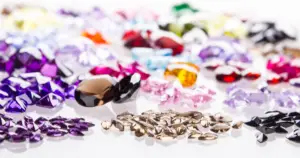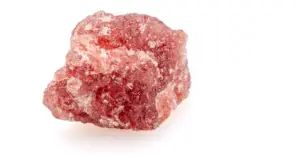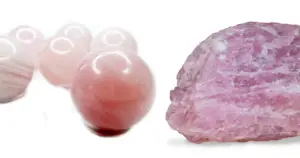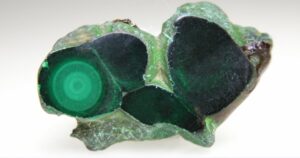How To Identify The Real Purple Labradorite Stone: Simple and Easy Hacks
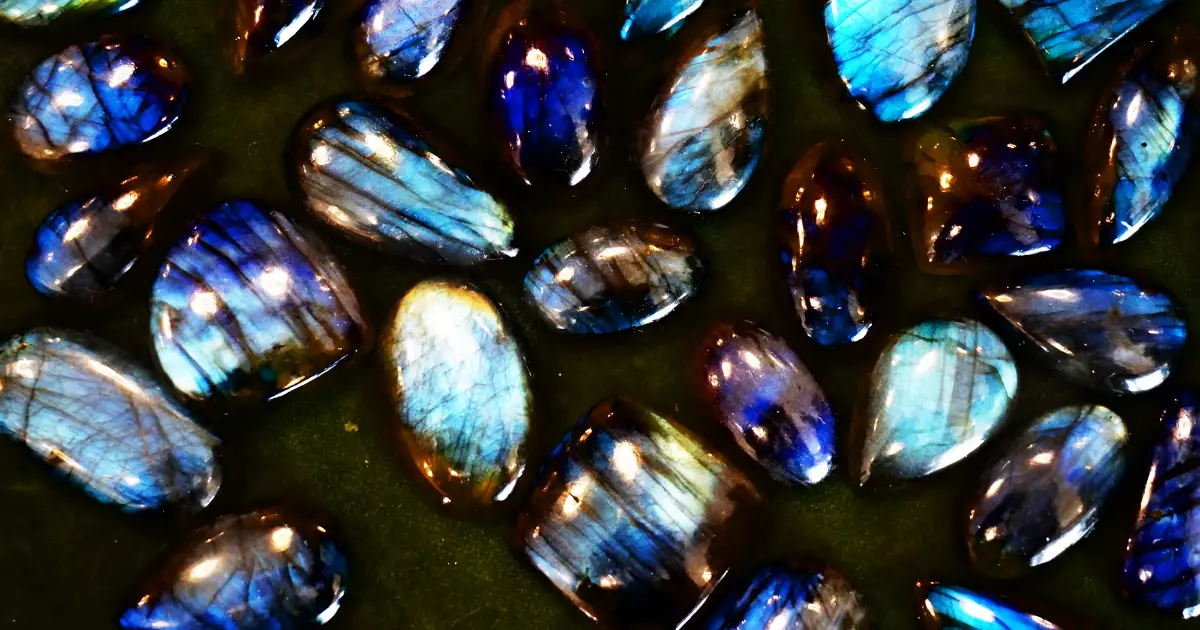
Purple Labradorite is a very beautiful and rare stone with genuine properties. It is however important to know how to identify the real Purple Labradorite stone.
Labradorite is a calcium-enriched semi-precious stone made of Plagioclase and Feldspar that usually flashes colorfully when exposed to light. This phenomenon is called adularescence. It possesses spiritual and physical properties which are believed to have been identified for the first time in Labrador, Canada.
Also Read: Labradorite Meaning: Healing Properties, Benefits and Uses
Labradorite has several properties, that are stated below:
- Color- It does not have its color, it comes as an illusion caused by light hitting on the imperfections within the stone.
- Clarity- It does not have clarity, lawlessness, or transparency, rather it has more flaws, fractures, and markings, making it more valuable.
- Cut- It is hard to cut and shape ensuring that they can maximize the light reflection and promote its color.
That is why most of them tend to be oval, round, pear, and marquise. In true labradorite, there should be more than one color, although most species have a dominant color. There is pink, purple, blue, and black labradorite, but they all have interplays of other colors mixed in.
However, all of them have optical effects redolent of the Aurora Borealis. Out of all the colors labradorite is found in, Purple Labradorite Stone is one of the most beautiful gems in the world.
We will now be discussing Purple Labradorite Stone and how to identify the real purple labradorite stone in brief:
Table of Contents
Origin Of Purple Labradorite Stone
Labradorite stone originally came from the Labrador Peninsula in Canada, specifically from the Isle of Paul near the settlement of Nain. One can find a purple labradorite stone anywhere in laboratories in Russia, Finland, Madagascar, the United States, and India.
However, the best place to find a purple labradorite stone in nature is to go to where it originated from, Canada!!
How To Identify The Real Purple Labradorite Stone
The best way how to identify the real Purple Labradorite Stone is through its amazing properties:
Physical Properties of Purple Labradorite
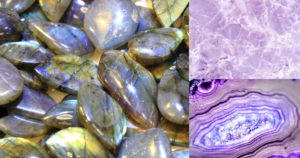
- Composition
Labradorite comprises 30-50% sodium feldspar and 50-70% calcium feldspar molecules and is a plagioclase feldspar. The potassium feldspar molecules, barium traces, and strontium molecules inside contribute to their light-emitting properties.
- Hardness
It ranks between 6 to 6.5 on the Mohs hardness scale.
- Specific Gravity
It has a specific gravity of 2.56 to 2.76.
- Appearance
The crystals of Labradorite are usually plate-shaped and have a glassy appearance.
- Length
They can measure up to 2 meters in length.
Metaphysical Properties of a Purple Labradorite Stone
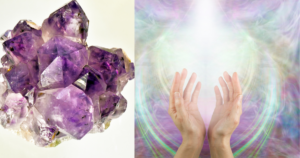
Believers connect the stone with spiritual powers. The labradorite stone is believed to produce physical abilities that help identify our inner eyes and enhance our vision, deepening our connection with ourselves. When used in ritual works, the stone is used as a psychic protector.
People state that they could be real while wearing the stone due to its metaphysical properties. In addition, this stone reflects bright colors, which are thought to increase our energy, help us reduce anxiety and stress, and also give us the power to heal and protect ourselves.
So, if you are looking for protection from evil or negative energy, consider adding purple labradorite to your collection.
Identification of a Labradorite Stone
Labradorite is a very distinct gem, and yet it is easy to identify. Labradorite, like most semi-precious stones, has a dark base color. However, the colorful streaks present inside it set this stone apart from others.
Finding minor fractures inside the stone is considered a good thing as they allow the light rays to bounce back at different wavelengths. This reflection gives the stone its shimmer and enables it to display varying colors. A purple labradorite stone is often found in a light purplish tone. However, they can sometimes appear so pale that it appears silver.
Fake labradorite can be identified by
-
- Hardness Test: Fake labradorite is softer than the real one and can be scratched by even a copper and steel needle.
- UV Light: Fake labradorite would glow in light-blue color when placed under UV light, while real labradorite stays inert and does not glow.
- Labradorescence: Fake gems would not show any shade change when rotated and will continuously be playful, whilst real ones appear dull or grey from one perspective, bright blue or pink when rotated.
By testing the stone with the above methods, one can save themselves from buying a fake purple labradorite stone.
Value of the Purple Labradorite
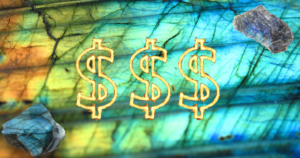
When determining whether Labradorite is valuable, there are several factors to consider. These factors include the colors mixing with it and how bright it shines. No doubt, Purple Labradorites are rare and highly sought after, but they are not the most valuable or expensive Labradorites.
Labradorites in watermelon green and red are of more value to collectors, as they are even more difficult to find.
How To Clean And Care For Your Purple Labradorite Stone
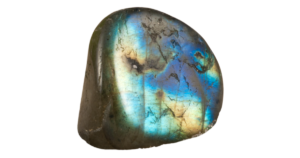
If you have a purple Labradorite in hand, you need to be extra cautious, to make it continue to shine for years to come.
Since the labradorite is prone to breaking apart, the safest way to clean the stone is by rinsing it quickly under fresh water. Using saltwater will break down the labradorite stone easily. Do not let the stone soak in water, as it could cause physical damage to the piece, rather just rinse the stone for a few seconds.
After cleaning the stone, wrap it in a soft cloth to dry and store it away in the fabric. Because labradorite is such a soft and delicate stone, be sure to keep it away from other rocks, crystals, and tools. It is especially receptive to scratches if left inside a jewelry box. It can be easily damaged; touching it to something harder can scratch it.
By following the above-mentioned suggestions, the stone will not become scratched or damaged.
Often Confused Stones With Purple Labradorite
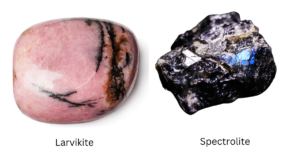
Purple Labradorites are often confused with their sister stone, the Moonstone. That’s because it is another feldspar mineral, and its internal structure is crystalline. The crystalline structure allows the moonstone to display an active interplay of light and color, just like a Purple Labradorite.
The best way to tell the difference between a Moonstone and a Purple Labradorite is by paying attention to the colors shown when light hits the stone. Labradorite will still have a dark base color when the light will hit it, while a Moonstone will appear in a lighter shade.
Other stones that are often confused with Labradorite include Larvikite and Spectrolite. So, one should always consider the above-mentioned properties of purple labradorites and should test the stone before buying to prevent purchasing fake labradorite or any other gem.
